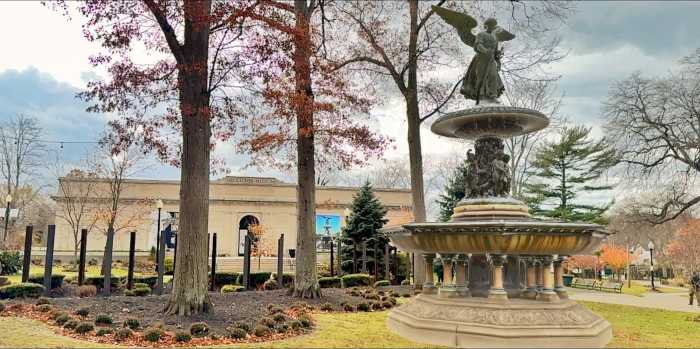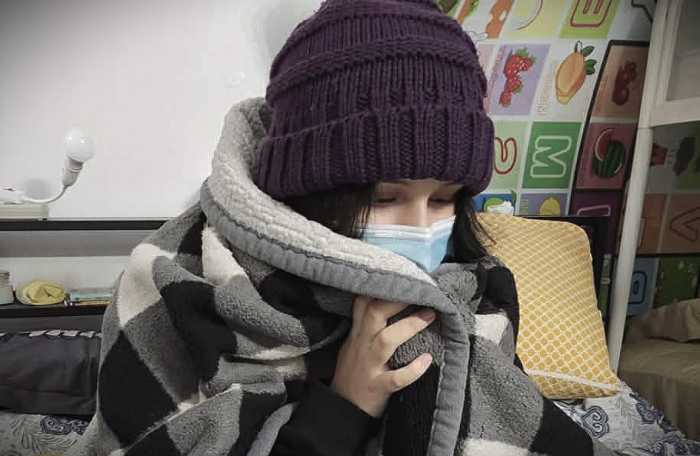The ruling is in – nuclear DNA results in the Gilgo Beach serial killer case will be admissible during trial.
Suffolk County Judge Timothy Mazzei issued his decision early Wednesday during an extremely brief appearance by suspected killer Rex Heuermann. It was an almost anticlimactic conclusion to a hearing that began in March and only concluded in August, where both the defense and prosecution called witnesses to the stand for examinations and cross examinations, some of which lasted several business days.
The hearing, which is known as a Frye hearing, was to determine whether or not the nuclear DNA tying Heuermann to several victims should be admissible in court. The nuclear DNA testing was not conducted by the Suffolk County Crime Lab, but rather was outsourced to the California-based Astrea Forensics, which uses a software called IBDGem to make nuclear DNA profiles and matches.
Related: Alleged Gilgo Beach serial killer DNA hearing devolves into ‘Jurassic Park’ debate
Several victims’ family members appeared in court, and stood behind Suffolk County District Attorney Ray Tierney when he delivered remarks, but did not speak.

About Nuclear DNA
A nuclear DNA profile was made of Heuermann when prosecutors obtained a buccal swab – which Heuermann’s defense attorneys Michael Brown and Danielle Coysh attempted to block in real time.
Nuclear DNA, which was introduced in the case in January of 2024 when he was charged with the murder of Maureen Brainard-Barnes, has since allegedly tied Heuermann to six of the seven murders he is charged with: Brainard-Barnes, Jessica Taylor, Valerie Mack, Sandra Costilla, Megan Waterman, and Amber Lynn Costello. Non-DNA circumstantial evidence was used to charge Heuermann with the murder of Melissa Barthelemy.
Related: First expert in Gilgo Beach serial killer case DNA hearing likens science to Shakespeare
The defense has argued that the science used by Astrea Labs is novel and unreliable, and called witnesses including Dr. Dan Krane to back those claims up. The prosecution, of course, called witnesses to support Astrea’s work including Dr. Kelly Harris, who called it “embarrassing” that science such as Astrea’s has not already been used in more criminal cases.
Brown said he intends to keep the DNA question as part of the defense strategy.
“The judge has issued a Frye decision saying, ‘This is acceptable, we’re going to permit this in,'” Brown said. “It doesn’t mean that we can’t cross examine these witnesses during the course of the trial. You folks were very attentive. You listened to what came out during cross examination, and that’s really just the tip of the iceberg in terms of what would come out during the course of the trial. So it’s all subject to cross examination, and you’re going to be dealing with 12 fair and impartial jurors who are going to hear a lot more at trial about what we’ve talked about during the Frye hearing.”
Mazzei’s ruling to admit the DNA is a watershed moment, as it creates precedent in New York State. Astrea’s technology has only been admitted in court in Idaho before.
Related: Judge grows weary as Gilgo Beach DNA hearing winds down
Heuermann or his family are connected to hairs found on multiple victims through both nuclear and mitochondrial DNA. Mitochondrial DNA rules out a high percentage of the population, with a possibility for there to be multiple donors for the DNA, whereas nuclear DNA points at one individual with a statistical improbability of anyone else being the donor of the DNA.
Brown and Coysh never challenged the mitochondrial DNA in the case, and have rather pointed out the donor possibility.
“I think in any case, particularly cold cases, it’s not any one piece of evidence,” Suffolk County District Attorney Ray Tierney said. “And what we’ve we’ve argued is, if you look at all the evidence, it’s significant, but particularly when you look at the interaction between all the evidence that that presents, we would allege and assert a very compelling case. So we have now nuclear DNA, we have mitochondrial DNA, we have phone records, we have witness statements, we have financial records, we have internet searches, we have phone activity, and we have other evidence.”
Related: LI serial killer case – Defense expert witness’s qualifications raise judge’s eyebrows

Still in The Pre-Trial Phase
While Mazzei’s ruling inches the case towards trial, there are still several obstacles standing before an official start to the trial. The prosecution must certify the case in New York State, and following Mazzei’s ruling on the admissibility of the DNA evidence, Brown filed a motion to preclude the evidence claiming the use of Astrea Forensics for Heuermann’s DNA is a violation of New York State health law.
“The public health law, I think, is Section 570,” Brown said. “It criminalizes this very type of action, which is an out-of-state, non-permitted laboratory for profit to test and offer into evidence in the state of New York on a criminal case. So a second motion has been filed, and hopefully we’ll get [the nuclear DNA evidence] precluded that way.”
Brown has also filed a motion to sever the cases, arguing that among the seven murders there should be as many as five cases based on each indictment: one trial for Waterman, Costello, and Barthelemy, one for Brainard-Barnes, one for Taylor, one for Costilla, and one for Mack.
Brown has repeatedly insisted that the modus operandi of the killer as well as location of remains – some were found fully on Ocean Parkway, while Taylor and Mack were found partially on Ocean Parkway and partially in Manorville, and Costilla was found in Southampton – points to multiple killers among the victims. However, Brown abandoned the idea of requesting the trial be moved out of Suffolk County, instead insisting residents of Suffolk familiar with the history of police corruption will be the best fit to be jurors here.
Tierney has argued there is a clear pattern of behavior on the part of the suspect that warrants the whole case as one trial.
Related: Suspected Gilgo Beach Killer Rex Heuermann May Seek Five Separate Trials for Murder Charges
Mazzei has called all parties back to court on Sept. 23, where he expects to rule on both the motion to sever and the motion asserting state health law.
Heuermann has pleaded not guilty to all seven murder charges. Both Brown and Tierney have asserted no plea deals are currently on the table.
Tierney has also said that the investigation into remaining victims on Ocean Parkway will resume after this trial, as adding more superseding indictments would only delay trial further. There are four remaining victims who were found fully or partly on Ocean Parkway – Tanya Denise Jackson and her daughter Tatiana Marie Dykes, both of whom were publicly identified in April, Karen Vergata, who was publicly identified in 2023, and Asian Doe, a biological male found wearing women’s clothing who has yet to be identified.
Nobody has been arrested or charged in any of these cases, and Heuermann has neither been named nor ruled out as a suspect in any of them.
Related: What evidence links alleged Gilgo Beach Killer to more victims?



































